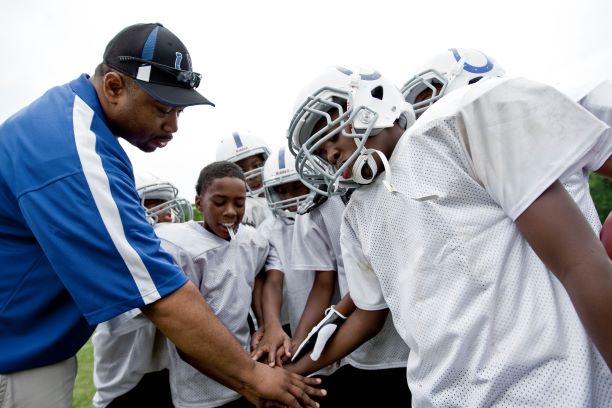How Do We Evaluate Growth in Coaches
An athletic director’s role is one of the most challenging and rewarding opportunities a person can have. Duties include scheduling, field maintenance, hiring coaches, managing facilities, upholding athletic codes, academic eligibility, budgets, travel, and conflict between coaches, athletes, and parents. There is never an easy day when you oversee a high school athletic program. ADs are always searching for options to make their jobs easier.
My experience with this role came as an assistant athletic director for a large high school in the midwest. I was in that position for 15 years and worked with four different athletic directors and temporarily spent three months in the role. My reluctance to give up coaching kept me from taking on the role full-time. Each athletic director I served under expected different job expectations in my assistant role.
 My role expanded under Brian Skortz, currently the athletic director and head men’s basketball coach at Brescia University in Kentucky. Coach Skortz and I implemented a character-based program at our high school. We developed a core value system and spent two years getting it off the ground. We trained the coaches and started to hold our coaches and athletes more accountable. The program was taking off when Coach Skortz moved on, and we hired a new athletic director.
My role expanded under Brian Skortz, currently the athletic director and head men’s basketball coach at Brescia University in Kentucky. Coach Skortz and I implemented a character-based program at our high school. We developed a core value system and spent two years getting it off the ground. We trained the coaches and started to hold our coaches and athletes more accountable. The program was taking off when Coach Skortz moved on, and we hired a new athletic director.
The final piece of the character program was a program evaluation that we administered at the end of every season. The school has now had two more ADs since we implemented the program. The values have changed, but character-based coaching is still thriving. The evaluation tool has been beneficial in recognizing successful coaching styles and in identifying areas of growth.
When I speak to coaches and ADs about developing a character-based athletic program or team, one of the biggest concerns they have is the ability to get their entire staff on board. For a plan to be successful across the board, there needs to be total buy-in. That is where the evaluation tool becomes so valuable.
When a school decides to focus on character, what they are saying is you want your coaches to become transformational, not transactional. The key to changing your culture is tailoring your evaluation tool to nudge your coaches towards a growth-minded mentality.
Our district had an extensive coach evaluation process. We took pride in our athletic department, and we always looked at evaluations as an opportunity to celebrate the best coaching practices and possibly an opportunity for growth.
The athletic director evaluated coaches on six standards:
- Leadership
- Program Planning
- Application of Professional Knowledge
- Assessment For and Of Program Growth and Development
- Communication, Climate, and Culture
- Professionalism
The coaches are evaluated as Distinguished, Effective, Developing/Needs Improvement, or Unacceptable.
These categories are all based on the observations of the athletic director. The greater the communication the coach has with the AD, the more informed the AD will be of what the coach is doing within their program. Communication not only allows the AD always to be informed; it will enable the AD to defend the coach’s actions when the AD can observe the coach in a practice and game environment.
Another crucial part of the evaluation process is giving the players on the team an exit survey. We called the team together, without the coach in the room, and gave them an anonymous 17-question survey. The player could strongly agree, agree, neutral, disagree, strongly disagree, or not applicable.
Some sample survey questions:
The coach is a positive role model. The coach sets an example in appearance, manners, language, conduct, ethical behavior, fair competition, and good sportsmanship in their role as a “coach.”
- Because of our coach, our team improved throughout the season.
- Because of our coach, I improved throughout the season.
- The coach develops positive relationships with athletes by communicating and showing interest in their well-being in and out of the season.
Allowing student-athletes to share their thoughts on the season provides the coach with feedback. As a coach myself, I use feedback from the players to reflect during the off-season. I may have believed I was taking care of the things necessary to develop my players and the team, but could quickly lose sight of something important. A functioning unit under a transformational coach will be honest and provide meaningful feedback for the coach. On the flip side, a team under transactional leadership may expose things to the AD and the coach that may be unpleasant to hear.
» ALSO SEE: Psych-Safety — The Number One Area Coaches Need to Develop
For a coach to grow and for a program to succeed, we need fair and meaningful tools to foster professional development. Coaches who seek this information will be great for your program as they grow and develop. Coaches who complain about these assessments can feel threatened and are not open to change. You will be better off without them.
Greg Winkler is currently coaching boys soccer at Charlotte High School in Punta Gorda, FL. Greg has published his second coaching book, “The Transformational Coach, Incorporating Mindfulness for Improved Performance” Meyer & Meyer Sports Publishing. Coach Winkler serves as the Advocacy Chair for High School Soccer with the United Soccer Coaches Association and was the National Soccer Coach of the Year in 2012.





